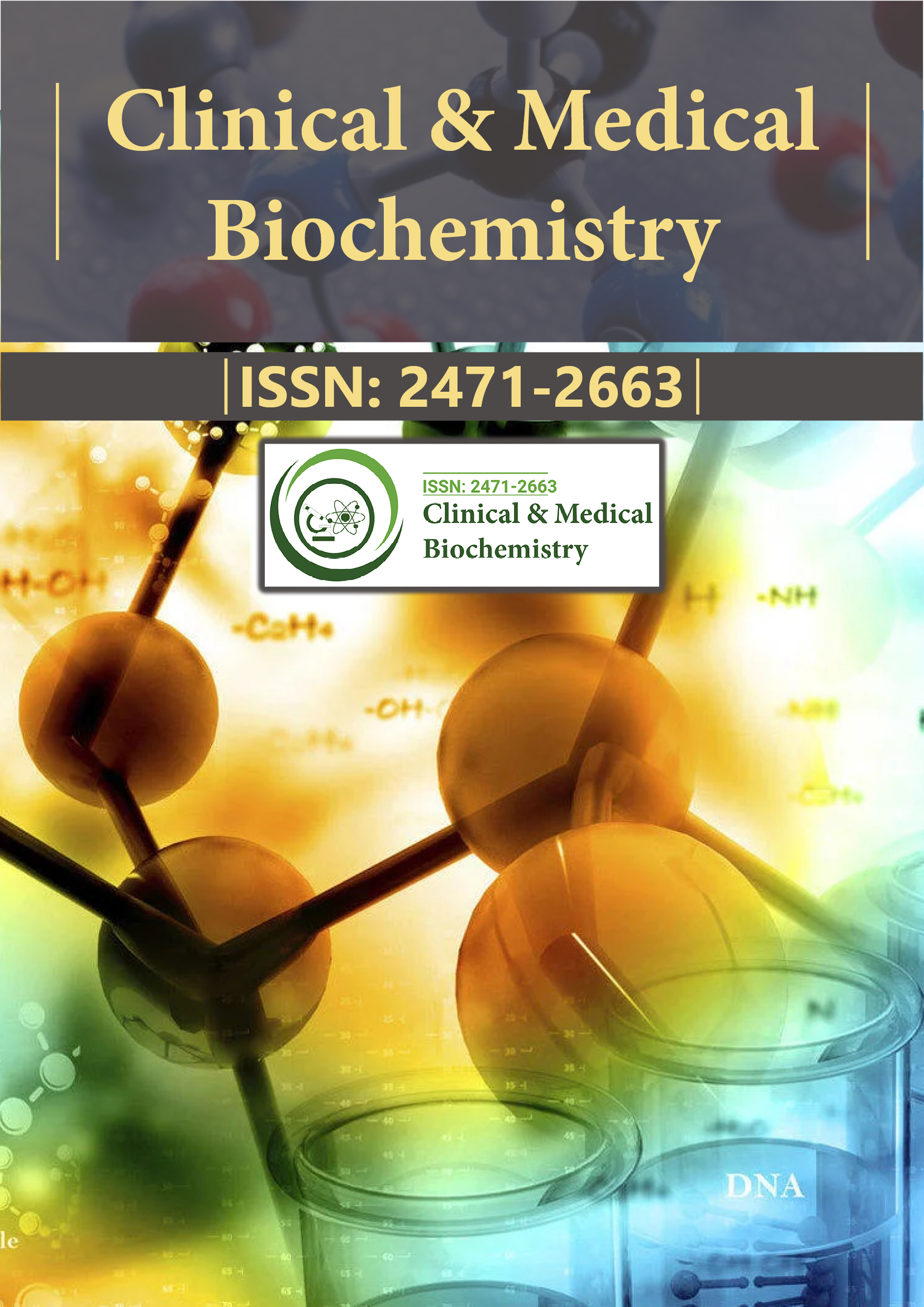Indexed In
- RefSeek
- Directory of Research Journal Indexing (DRJI)
- Hamdard University
- EBSCO A-Z
- OCLC- WorldCat
- Scholarsteer
- Publons
- Euro Pub
- Google Scholar
Useful Links
Share This Page
Journal Flyer

Open Access Journals
- Agri and Aquaculture
- Biochemistry
- Bioinformatics & Systems Biology
- Business & Management
- Chemistry
- Clinical Sciences
- Engineering
- Food & Nutrition
- General Science
- Genetics & Molecular Biology
- Immunology & Microbiology
- Medical Sciences
- Neuroscience & Psychology
- Nursing & Health Care
- Pharmaceutical Sciences
Perspective - (2024) Volume 10, Issue 2
The Mechanisms of Glucose Metabolism: An Essential Step in the Production of Cellular Energy
Liam Ruby*Received: 25-Apr-2024, Manuscript No. CMBO-24-25757; Editor assigned: 29-Apr-2024, Pre QC No. CMBO-24-25757 (PQ); Reviewed: 14-May-2024, QC No. CMBO-24-25757; Revised: 22-May-2024, Manuscript No. CMBO-24-25757 (R); Published: 30-May-2024, DOI: 10.35841/2471-2663.24.10.215
Description
As the primary mechanism determining the transformation of glucose into metabolic intermediates and the useful energy required for cellular survival, glucose metabolism forms the basis of cellular bioenergetics. All of the metabolic reactions that take place inside cells are included in this tightly controlled process, which ends with the synthesis of Adenosine Triphosphate (ATP), the universal unit of cellular energy. An in-depth knowledge of the complex interactions between metabolic pathways that control energy synthesis, storage, and consumption in living things can be obtained by studying the details of glucose metabolism. Depending on the kind of cell and the physiological environment, either facilitated diffusion or active transport processes are used to move glucose molecules into cells at the initial phase of glucose metabolism. Once within the cell, glucose is phosphorylated by glucokinase or hexokinase to produce glucose-6-phosphate, which is an essential step that locks glucose into metabolic pathways and keeps it inside the cell. In addition to using ATP, this phosphorylation event controls the flow of glucose through glycolysis and other metabolic pathways, making it an essential regulator of glucose metabolism.
The final state of glucose-6-phosphate is determined by the cell's metabolic requirements as well as the physiological environment in which it exists. Glucose-6-phosphate joins the glycolytic route in energy-demanding tissues including the brain and muscle, where it passes through a sequence of enzyme processes to produce pyruvate and ATP. The first stage of glucose catabolism is called glycolysis, and it ends with the creation of two pyruvate molecules, ATP, and reducing equivalents in the form of Nicotinamide Adenine Dinucleotide (NADH). In an aerobic environment, pyruvate enters the mitochondrial matrix and is converted to acetyl-CoA by the enzyme Pyruvate Dehydrogenase Complex (PDC), which connects glycolysis to oxidative phosphorylation and the Tricarboxylic Acid (TCA) cycle. The TCA cycle, a set of biological processes that produce reducing equivalents in the form of NADH and FADH2, which power the Electron Transport Chain (ETC) and ATP synthesis, uses acetyl- CoA as a substrate. By converting pyruvate into 36 ATP molecules for every glucose molecule, this aerobic metabolism optimizes the energy yield from glucose oxidation.
In contrast, pyruvate is transformed into lactate by lactate dehydrogenase in anaerobic environments or during times of oxygen deprivation, which enables glycolysis to proceed in the absence of oxygen and regenerates NAD+ from NADH. Although it is less energy-efficient than aerobic respiration, this anaerobic metabolism, sometimes referred to as fermentation, allows for the quick synthesis of ATP in situations when oxygen is limited. When oxygen demand is greater than oxygen supply, lactic acid fermentation is frequently seen in working muscles. This causes lactate to build up and restlessness to be felt in the muscles. Beyond its function in the synthesis of ATP, glucose metabolism affects cell development, proliferation, and signaling through interactions with other metabolic pathways and cellular functions. Building blocks for cell development and division are produced by glycolytic intermediates, which act as precursors for biosynthetic pathways that include the synthesis of lipids, nucleotides, and amino acids. Furthermore, glycolytic enzymes and metabolites influence gene expression and cellular fate choices in both health and disease by taking part in oxidative stress response mechanisms, redox signaling pathways, and epigenetic control.
Numerous metabolic diseases, such as diabetes, obesity, and metabolic syndrome, are linked to dysregulation of glucose metabolism. Type 2 diabetes is characterized by insulin resistance, which impairs target tissues' ability to absorb and use glucose, resulting in hyperglycemia, dyslipidemia, and poor energy metabolism. Cancer cells also show abnormal glucose metabolism they produce more lactate and glycolysis even when oxygen is present, a process called the Warburg effect. This metabolic reprogramming gives tumor cells a growth edge in the tumor microenvironment while meeting their bioenergetics and biosynthetic needs. Beyond clinical medicine, research in biochemistry, molecular biology, and systems biology is also involved in the study of glucose metabolism. These fields contribute to our knowledge of the fundamental mechanisms that supports metabolic control and dysregulation in both health and disease. Comprehensive profiling of metabolic pathways and fluxes is made possible by sophisticated analytical techniques like flux analysis and metabolomics, which also provide light on the dynamics of the metabolic network and the metabolic phenotypes linked to various disease states.
Conclusion
Glucose metabolism is an essential mechanism in cellular bioenergetics that controls how glucose is transformed into energy and metabolic intermediates needed for cellular survival. Researchers can obtain significant knowledge into the dynamic interaction of metabolic pathways that explain cellular physiology and pathology by exploring into the complexities of glucose metabolism. By providing chances for therapeutic intervention in metabolic disorders, cancer, and other diseases, our knowledge of the complexity of glucose metabolism opens up possibilities for precision medicine and novel medicines that target metabolic deficiencies in both health and disease.
Citation: Ruby L (2024) The Mechanisms of Glucose Metabolism: An Essential Step in the Production of Cellular Energy. Clin Med Bio Chem. 10:215.
Copyright: © 2024 Ruby L. This is an open-access article distributed under the terms of the Creative Commons Attribution License, which permits unrestricted use, distribution, and reproduction in any medium, provided the original author and source are credited.

